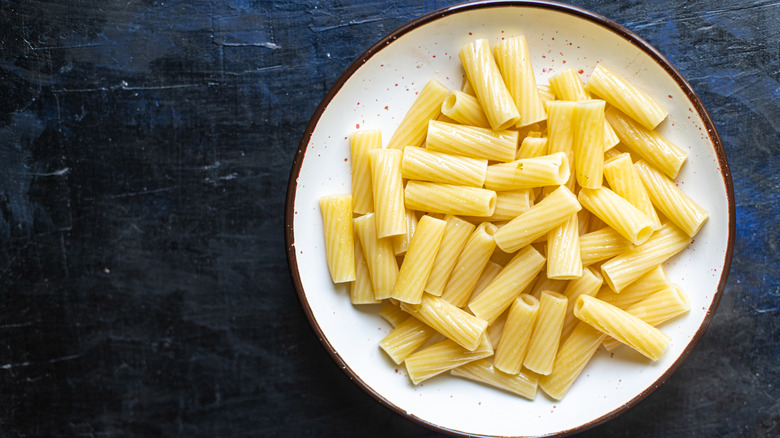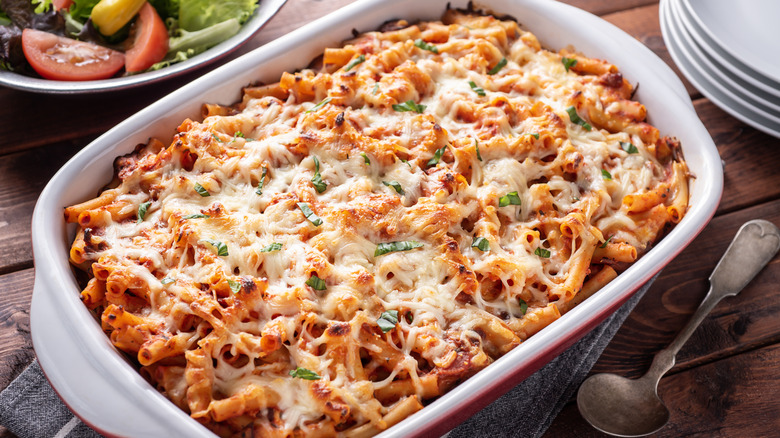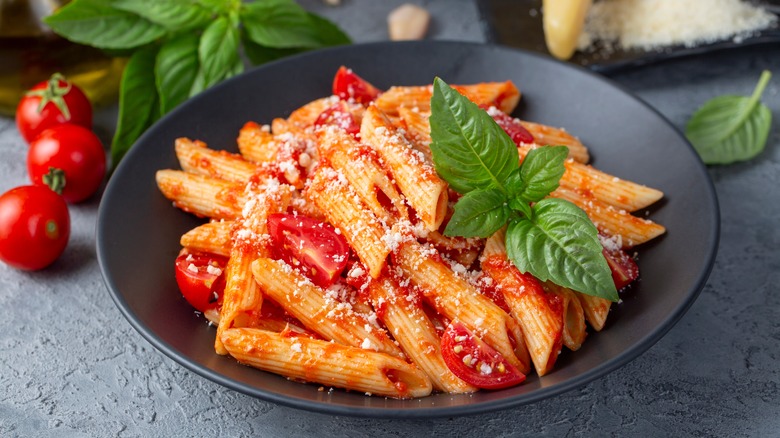Ziti Vs Penne: What's The Difference?
It's no secret that different pasta shapes work best with various sauces, but have you ever wondered about the differences between some of the more common macaroni styles? When you're finding the right ingredients for Italian food, choosing the correct pasta is of the utmost importance. While some dishes, like spaghetti all'assassina (which can be made with a hot pan technique), are straightforward, it can be difficult to decide between two noodles when they appear to be the same. One such comparison can be made between ziti and penne, two shapes of pasta that may look similar but tend to have very different uses.
Ziti and penne are both tube-shaped, hollow pasta types that are well suited for heavy or creamy sauces. Thanks to their central hole, these shapes are the perfect vessel to hold onto sauce and melted cheese, allowing you to get all of that goodness in every single bite. Even though they're so alike, though, they aren't exactly interchangeable (although you can swap one for the other in a pinch). For instance, ziti tends to be used more in baked pasta dishes (classic baked ziti, anyone?), while penne is used in very saucy recipes (like the always popular penne a la vodka).
What is ziti?
Ziti hails from southern Italy and is known for its tubular shape, straight-cut ends, thin walls, and smooth texture. You can usually find ziti in about 1- to 2-inch-long pieces in the grocery store, although some imported brands sell them in long tubes that you then snap by hand to the size of your choosing. Because ziti's smooth surface and thin walls tend to get soft and creamy when baked, they're perfect for pasta al forno (aka baked pasta). For this use, simply boil the pasta for a couple of minutes before tossing it with your desired sauce, topping it with cheese, and baking it in a casserole dish until the cheese is melted.
Some of the best recipes for this shape include eggplant ziti parm, baked ziti with mini meatballs, and a baked ziti made with a creamy vodka sauce. You may even notice ziti as a topping on a pizza — it's an ideal shape to use for this because it doesn't get too hard in the oven.
What is penne?
With its thick walls, ridged sides, and angled ends, penne is one of the most recognizable pasta shapes. While you can find smooth penne in stores, the ridged version is more widely used thanks to its ability to attract and hold on to sauces. You can typically find it in stores in about 1-inch-long noodles, although they're usually a little smaller than ziti. Because of its thicker walls, penne is often cooked until al dente and then immediately tossed with sauce, giving the dish a perfect bite and undeniable chew. While it can be baked if needed, this shape is best used in fresh pasta dishes thanks to its firmer texture that doesn't break down to be as soft as ziti.
You can find penne used in a variety of dishes, including penne pomodoro, creamy garlic and chicken penne, and pasta primavera. It's also often used in cold pasta dishes, like a summer pasta salad because it holds its shape and texture well once cooled.



